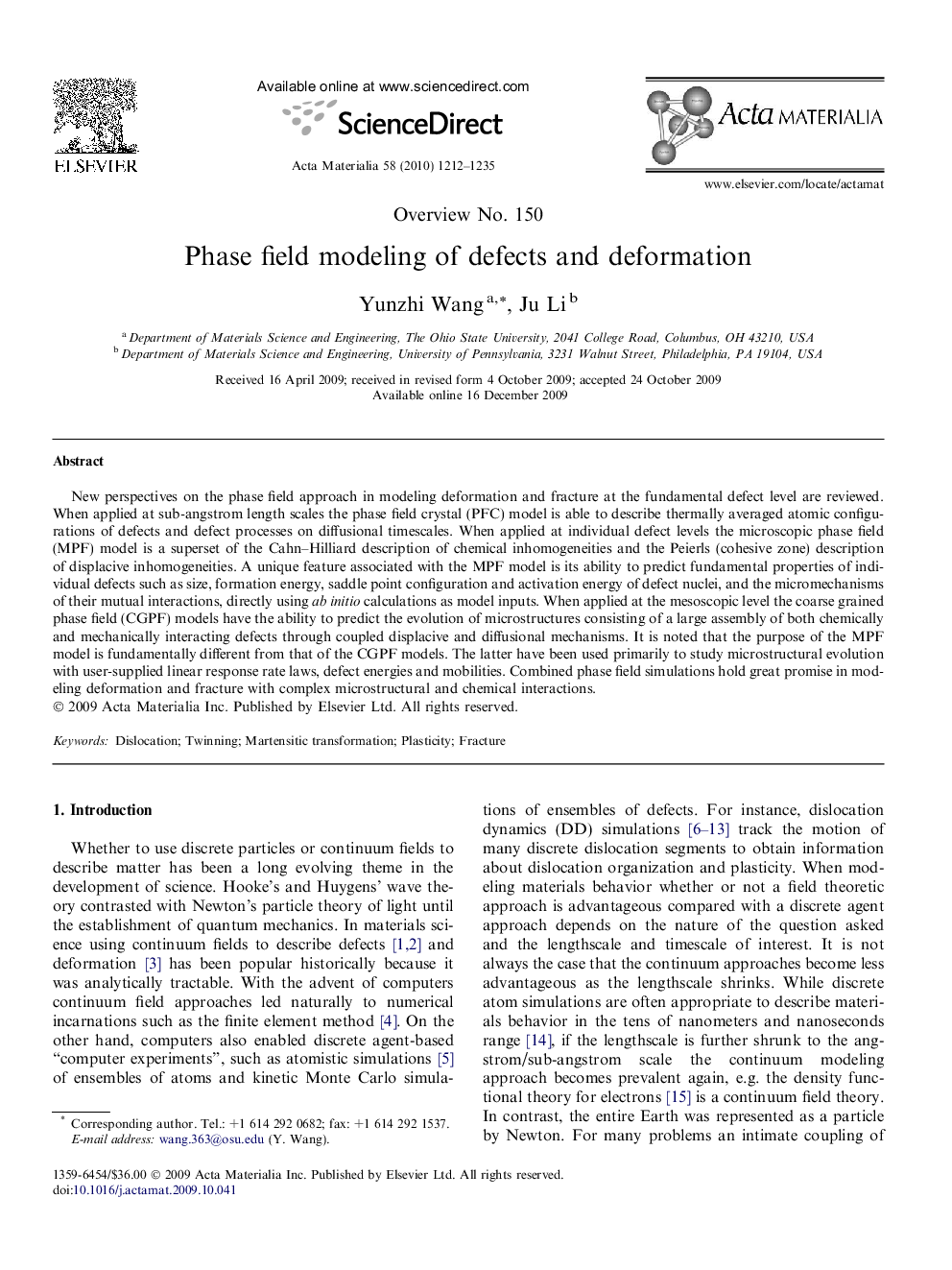| Article ID | Journal | Published Year | Pages | File Type |
|---|---|---|---|---|
| 1448415 | Acta Materialia | 2010 | 24 Pages |
New perspectives on the phase field approach in modeling deformation and fracture at the fundamental defect level are reviewed. When applied at sub-angstrom length scales the phase field crystal (PFC) model is able to describe thermally averaged atomic configurations of defects and defect processes on diffusional timescales. When applied at individual defect levels the microscopic phase field (MPF) model is a superset of the Cahn–Hilliard description of chemical inhomogeneities and the Peierls (cohesive zone) description of displacive inhomogeneities. A unique feature associated with the MPF model is its ability to predict fundamental properties of individual defects such as size, formation energy, saddle point configuration and activation energy of defect nuclei, and the micromechanisms of their mutual interactions, directly using ab initio calculations as model inputs. When applied at the mesoscopic level the coarse grained phase field (CGPF) models have the ability to predict the evolution of microstructures consisting of a large assembly of both chemically and mechanically interacting defects through coupled displacive and diffusional mechanisms. It is noted that the purpose of the MPF model is fundamentally different from that of the CGPF models. The latter have been used primarily to study microstructural evolution with user-supplied linear response rate laws, defect energies and mobilities. Combined phase field simulations hold great promise in modeling deformation and fracture with complex microstructural and chemical interactions.
